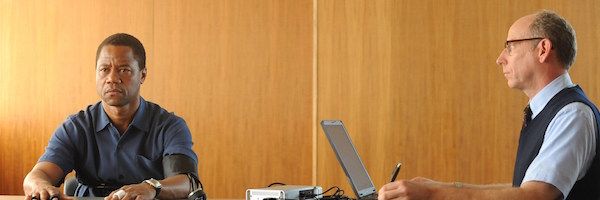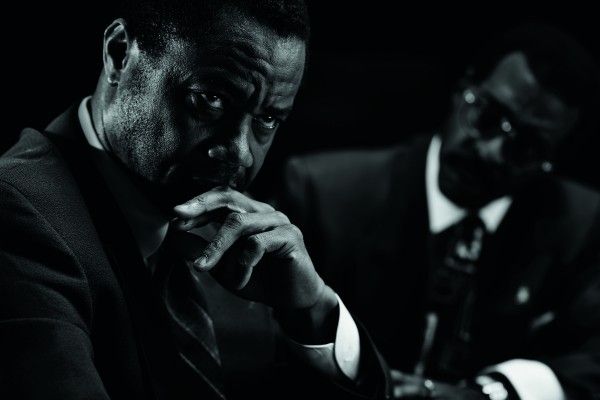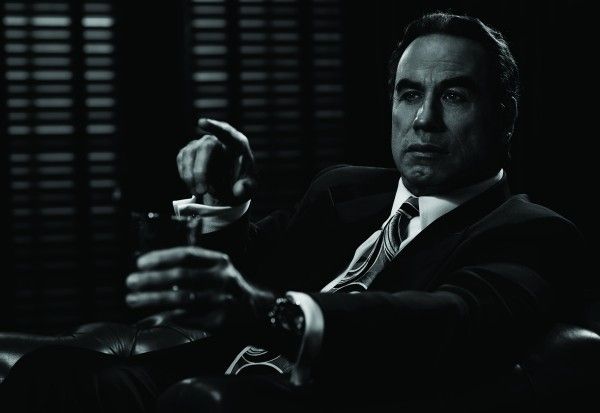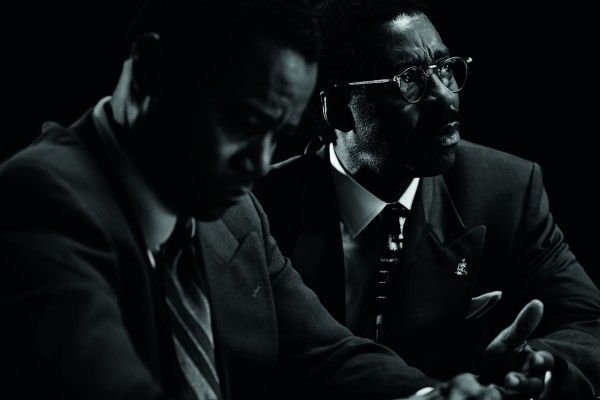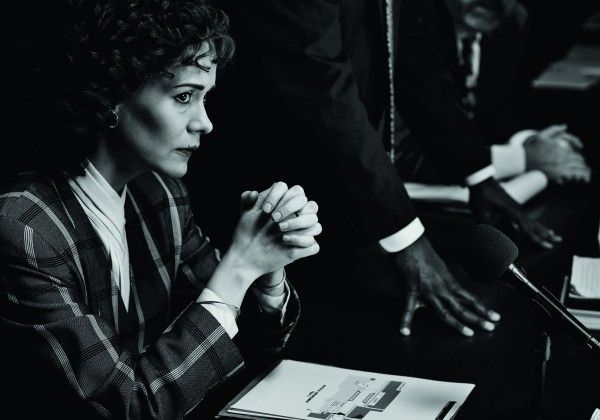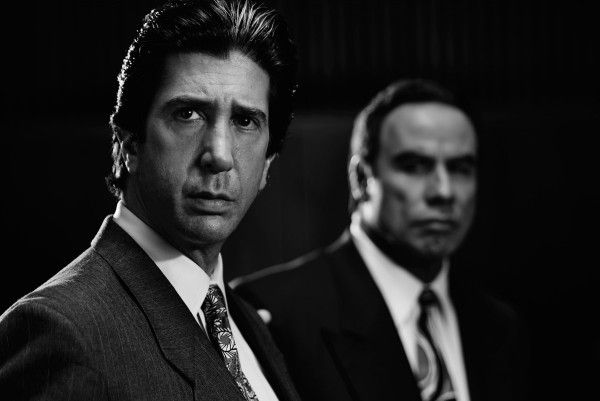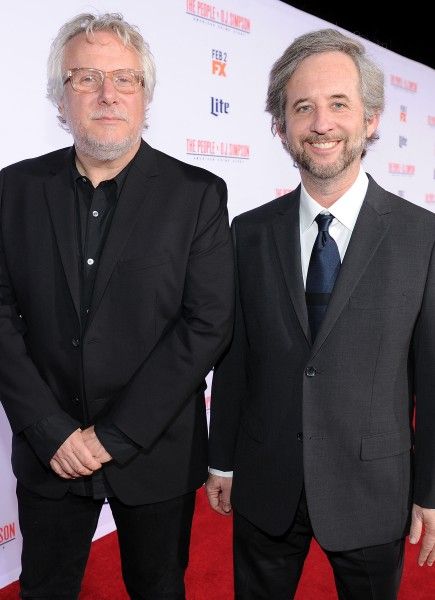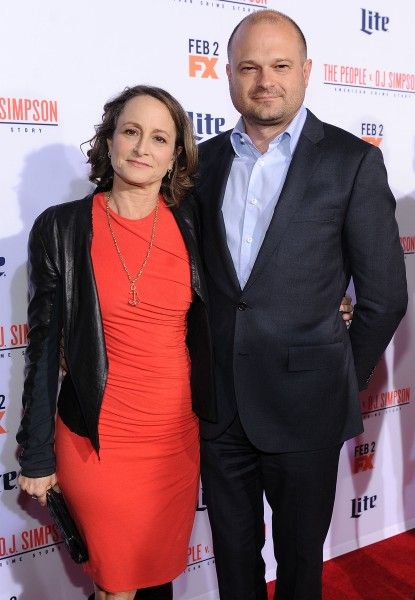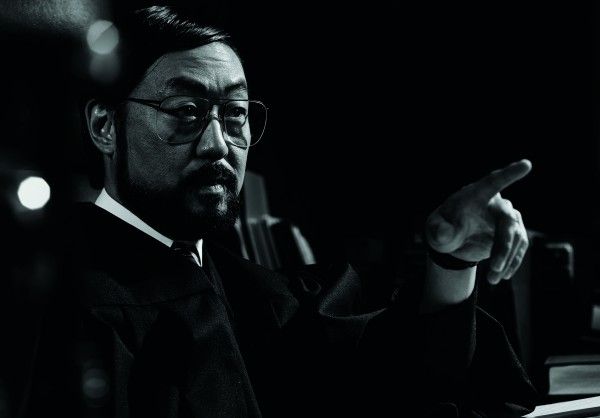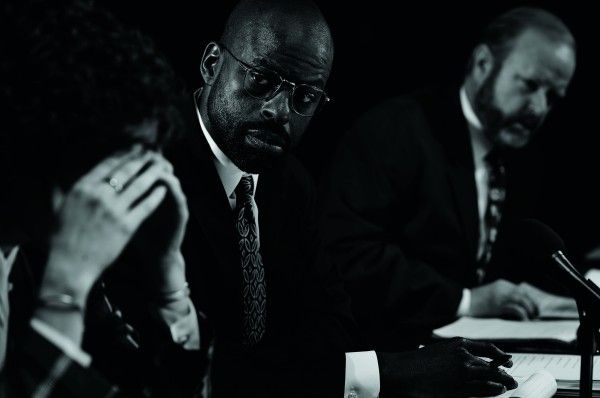Based on the book The Run of His Life: The People v. O.J. Simpson by Jeffrey Toobin, the FX 10-episode limited series The People v. O.J. Simpson: American Crime Story delves into the O.J. Simpson trial told from the perspective of the lawyers. It explores the chaotic behind-the-scenes dealings and maneuvering on both sides of the court, and how a combination of prosecution overconfidence, defense shrewdness, and the LAPD's history with the city’s African-American community gave a jury the reasonable doubt that it needed. The series stars Cuba Gooding Jr. (O.J. Simpson), John Travolta (Robert Shapiro), Sarah Paulson (Marcia Clark), David Schwimmer (Robert Kardashian), Courtney B. Vance (Johnnie Cochran), Sterling K. Brown (Christopher Darden), Nathan Lane (F. Lee Bailey) and Kenneth Choi (Judge Lance Ito).
While at the TCA Press Tour, executive producers Nina Jacobson and Brad Simpson, along with executive producers/writers Scott Alexander and Larry Karaszewski, spoke to Collider about why Toobin’s book lent itself to TV, showing people what they don’t know about what went on with the O.J. Simpson trial, staying as close to the facts as they could, having most of the scripts finished before casting, assembling such an incredible ensemble of actors, why the cast is relevant to the way we consume media now, and the most surreal moments on set. From those interviews, we’ve put together a list of 18 things that you should know about The People v. O.J. Simpson: American Crime Story.
-
Executive Producer Brad Simpson came across Jeffrey Toobin’s book in a book store and picked it up because he’s a fan of the author’s writing. As he was reading it, he realized that it was a really compelling page-turner. And then, he passed it along to his producing partner, executive producer Nina Jacobson. After their made their TV deal at FX, they brought up the book because they thought it lent itself to TV, in such a great way.
- Scott Alexander and Larry Karaszewski were the first writers that Jacobson and Simpson went to, and they said yes and shared the same vision. And then, Ryan Murphy had read the scripts and wanted to get on board as an executive producer.
- The big agenda of the show was to show people what they don’t know about what went on with the O.J. Simpson trial. And they really wanted to humanize the people involved in a way that was startling.
- The series captures what’s compelling about the Toobin book, but in the voice of Alexander and Karaszewski, which became a magnet for attracting talent, along with the name of Ryan Murphy. Actors feel very safe with him and want to work with him.
-
When it came to telling a story that would be interesting to viewers vs. making sure all of the facts were accurate, Alexander and Karaszewski tried to be true to the facts as much as they could. They consider themselves research fiends, spending three years on this project alone, and find that true-to-life stories are much stranger than fiction. And having 10 hours gave them time to explore how all of the little decisions led to the big decisions. The only time they had to sculpt things was in terms of omission and condensing periods of time.
- Alexander and Karaszewski had most of the scripts done before casting. The scripts had a tone with a mix of high drama, tragedy, absurd comedy and social commentary, so the actors would be able to see just how much they’d get to do. They didn’t want to do “stunt casting.” Even if someone was a star, they had to work for the role. They got all of their first choices for the roles.
- The only casting struggle that they had was with John Travolta, who Jacobson had a previous relationship with, because he had said no to TV for years. It was the scripts, and Jacobson and Murphy pursuing him, that led to him signing on.
- When it came to why they wanted Travolta to play Robert Shapiro, Jacobson said, “He is an enormously entertaining showman, and he is a movie star. You just want to watch him. You have such affection and compassion for him, and you want to see more of him. Also, having someone like John, automatically elevated us to event TV and attracted a lot of other actors.” Added Simpson, “If you think of him in terms of the John Travolta who did Primary Colors, he’s great at playing big personalities and making them dazzling, but also deep.”
- Shapiro came up with the race defense, but didn’t really know where it would ultimately go. He was a Century City lawyer who handled a certain level of clientele, and then found himself at the center of this case, in a position that he never could have predicted.
-
O.J. Simpson had always been a very approachable celebrity, who was always willing to take a photo or sign an autograph. So, when he got charged with the murders, people were shocked because he was so well-liked and were convinced that he couldn’t have possibly done it. The police had been called for domestic abuse eight previous times, and he had only been charged one time because they were too afraid of taking on a celebrity. One of those times, he ran away and escaped, and the police let it go. That’s why it was also so shocking when the police who had repeatedly let him go in the past were accused of framing him.
- Everybody had their own opinions about the case when it was happening, but now that they’ve researched the events and everyone involved, Jacobson said, “Once you really get to know the people, you can never look at it the same again. That was what was so revelatory in developing the project. Every one of these people was so much more complex and what they were going through was so much more challenging than what you imagined, at the time. Everybody was so reactive at the time of the trial, and we all pushed each of these people toward caricature. I had no idea that Marcia Clark was recently divorced, a single mom and going through a custody battle. And to see how overt the sexism was toward her and how profound the double standard was, I didn’t see any of that, at the time.”
- This case is incredibly relevant to the way we consume media right now. It was the birth of the 24-hour news cycle, the birth of reality TV, the birth of celebrity culture, and the birth of this thing where the substance of what you’re doing is not examined because you’re only paying attention to the surface.
- According to Jacobson, they chose not to contact any of the people involved in the case, going into the project, because they were adapting Toobin's book and not making a docu-drama. Some of the actors decided to reach out to the people they were playing, or somebody who knew the person they were playing.
-
The series never actually shows the victims in life. They were very mindful of the fact that the victims ended up being a footnote in the trial, which ultimately became about everything but them.
- They had a very intense and rigorous production schedule for this series that a very efficient team was able to complete, and it was both fulfilling and exhausting. They had only three directors – Ryan Murphy, Anthony Hemingway and John Singleton – help realize the vision.
- Throughout the shoot, there were many moments that were very surreal. The first time Jacobson and Simpson sat on the courtroom set, which was perfectly recreated, and looked at the cast that had been assembled, they couldn’t believe their good fortune. It was equally strange for Alexander and Karaszewski, who saw the real-life individuals in the actors that were portraying them.
- They shut down the 710 freeway to drive a white Bronco up and down, for the scenes between O.J. Simpson and AC Cowlings.
-
Because Alexander and Karaszewski’s next project is a film, from Toobin’s book about Patty Hearst, they won’t be available to do Season 2 of the show. They are fascinated by Patty Hearst’s story because they see it as a metaphor of the youth culture of the ‘60s and ‘70s. She was a pampered daughter who rebelled. Hearst was on the cover of Newsweek seven times, during that period, and she went from being the victim to being Tania with a machine gun. With distance, they can re-examine the story.
The People v. O.J. Simpson: American Crime Story airs on Tuesday nights on FX.

